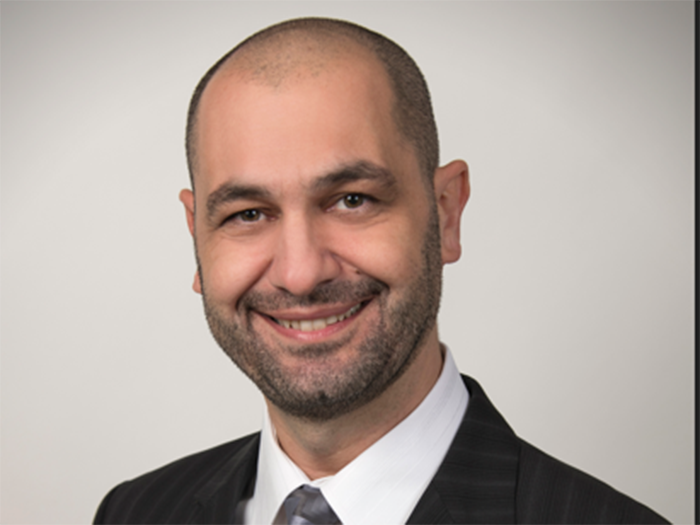Three Questions for Scott Sexton, the President of FIGUR8

Dan Reynolds, the editor-in-chief of Risk & Insurance, sat down with Scott Sexton, the president of FIGUR8. The company provides physical therapists with a portable biomechanics lab to more accurately record the recovery progress of injured workers.
What follows is a transcript of that discussion, edited for length and clarity.
Risk & Insurance: What is your perspective on the disconnect between the data and results we’re seeing and the actual condition of patients in the recovery process?
Scott Sexton: Let me give you a concrete example of a patient one of our providers treated a few months ago. We’ll call her Jane Smith. Jane came into the physical therapy office after a referral and was treated for several weeks.
The current gold standard for reporting recovery progress in physical therapy is patient-reported outcome measures (PROMs). Over the course of eight weeks, Jane reported to her physical therapist that she was getting worse, whether it was increased pain or dysfunction.
However, the physical therapist had access to FIGUR8 and was able to do a biomechanics lab assessment, which accurately, objectively and precisely showed what was going on physiologically with Jane. The data revealed that the patient was actually getting better and was stable, despite her perception of getting much worse.
This changes the entire paradigm of the story. Without the FIGUR8 data, the PT might have recommended that Jane be assessed by her treating physician for increasing pain medication, getting an injection or even considering surgery. But with the data, the physical therapist could show the patient that despite feeling pain and discomfort, she was actually improving.
It’s like when we were growing up and getting back into sports training. The first week of practice, we’d be in a lot of pain, sometimes barely able to move our legs. The patient may be experiencing that pain but not recognizing that they’re getting better. The FIGUR8 data allows the physical therapist to reassure the patient that it’s okay and that they’re improving — a tool they didn’t have before.
R&I: Can you talk about the implications of using generative AI with the current limitations in patient-reported outcome data?
SS: The implications of using generative AI with the current limitations in patient-reported outcome data are significant. AI is only as good as the foundational data that populates it, so if the data has limitations, the algorithm will have limitations as well.
In Jane’s case, the data is not just limited but actually false. The patient is getting better, but the data suggests otherwise. If we were to take the previous algorithm with all that data at scale, we would be building a recommendation that is the exact wrong answer for the patient.
Like our example with Jane, the algorithm might suggest sending the patient back to the treating physician for more medication, injections or other interventions when that is not what the patient needs. To address this, we have to pause and take the time to listen to the patient. We need to unpack what they are telling us, because there may be other factors in that person’s life that we are not aware of.
R&I: What’s the most important thing to keep in mind given all the complexity that we see in the medical management of workers’ comp claims and health care in general?
SS: With all the chaos and uncertainty in the world, it’s crucial that we don’t lose sight of what truly matters — the human element. At the end of the day, this is about people’s lives and wellbeing.
We must remember to approach challenges with empathy and compassion. It’s easy to get caught up in the whirlwind of events and forget the real impact on individuals and communities.
By keeping the human being at the center of our focus, we can make more meaningful progress and find solutions that genuinely improve people’s lives. This perspective should guide our decision-making and actions as we navigate these difficult times.
In the workers’ compensation ecosystem, we sometimes misidentify who the customer is that we are serving. There are many organizations involved, such as the employer, insurance carrier, adjuster and case manager. However, the patient is often treated as the product rather than the customer.
At FIGUR8, we aim to change this lens and focus on serving the patient more effectively. By providing accurate, precise and objective data, we enable those around the patient to support them better. This data helps increase confidence for the physical therapist in treating the patient, the physician in their treatment and return-to-work plans, and the patient in their recovery and ability to return to work.
This confidence also extends to the employer and the payer. The payer has increased assurance that the treatment is working, reducing concerns about medical necessity. They can see the patient’s progress and recovery.
Much of the structure in the workers’ compensation system, such as guidelines and fee schedules, exists due to a lack of trust. Our goal at FIGUR8 is to support the existing ecosystem by providing the data needed to build confidence and certainty in the care being delivered, ultimately serving the patient better. &










